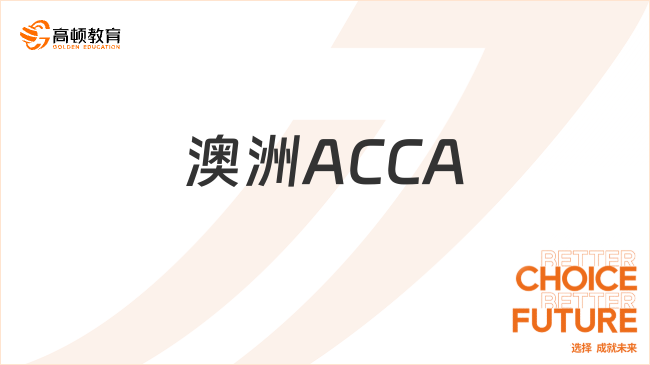2005年12月考试Paper1.2考官谈备考
Relevant to: Paper 1.2
Professional scheme
The structure of this paper was identical to recent previous sittings with 25 compulsory multiple choice questions in Section A and five compulsory questions in Section B. As in June 2005, the questions in Section B did not carry equal marks. On this occasion there was one 8 mark question, two 9 mark questions and two 12 mark questions. This pattern may change in the future but there will always be five questions in Section B and each will carry between 8 and 12 marks.
On this occasion, candidates’ performances spread right across the whole spectrum of marks. The paper acted as a very good discriminator of candidate performance. There were slightly more candidates than usual scoring very high marks on this paper but on the other hand, as usual, there were quite a few papers scoring very low marks.
Section A
The questions in this section came from right across the syllabus and each carried two marks. There was the usual mixture of computational and descriptive questions. The topics tested complemented the topics set in the longer Section B questions and therefore there was a full overall coverage of the syllabus by this examination.
Section A questions on the following topics were least well answered: cost behaviour, break-even analysis, the economic order quantity model, relevant costing and pricing.
A few candidates failed to record any of their answers to the multiple choice questions in Section A on the front of the Candidate Registration Sheet (CRS), as instructed. Many others did not bubble their answer choices in the correct way on the CRS, again as instructed. These are clear examples of candidates failing to read the instructions associated with an examination carefully. Future candidates are advised to read these instructions carefully as the answers to Section A questions represent 50% of the total marks available on this paper.
Section B
This 12 mark question tested various aspects of cost behaviour and relevant costing.
Part (a) first required candidates to calculate the variable cost per unit and the total fixed costs from the simple data provided. On this occasion the high-low method was not specified but as there were only two activity levels and two total costs available this was the only feasible approach. It then required candidates to calculate the selling price and contribution per unit. Using the contribution to sales ratio given was the key to these calculations.
Many candidates scored full marks to this part of the question. However there were also many who did not seem to know how to tackle it.
Errors made by the weaker candidates included:
Calculating the variable cost per unit by dividing the total cost by the number of production units instead of using the high-low method.
Using the incorrect number of units when calculating the total variable costs to deduct from the total costs to obtain the total fixed costs.
Calculating full capacity incorrectly.
Incorrectly representing the relationship between variable cost and selling price using the contribution to sales ratio.
Giving total answers when per unit answers were required.
Part (b) required candidates to calculate the change in monthly profits that would result from a new contract. This involved the application of basic knowledge to the situation presented. This part was not well answered by the vast majority of candidates. The way that the requirements to all three parts of Question 1 were laid out on the examination paper was intended to encourage candidates to use the information calculated in (a) to carry out the calculations in (b) and at the same time being aware that there was an opportunity cost involved, as indicated in (c). The key was to calculate the total contribution effects of (i) the new business and (ii) the lost business. As the published answers show these require no more than about six lines of calculation. However what the vast majority of candidates did was to calculate the company’s total profit before the new business and the total profit after the acceptance of the new business. This approach in not wrong but it is quite tedious and definitely time-consuming. Many candidates filled up one to two sides of their answer books using this approach and often in doing so made a number of errors. A common error was to misread the question and assume that total existing sales would fall by a sixth (17,000 units) instead of by one unit for every six units of new business (2,500 units). If candidates had given just a little thought about their calculations they would have realised that the company would not consider a decision that meant losing the full contribution on 17,000 units in order to gain a lower contribution per unit on 15,000 units.
Part (c) - for two marks - required an explanation of the term ’opportunity cost’ in the context of the company in the question. Explanations were generally poor and showed that many candidates had learnt, and not always correctly, a definition of opportunity cost and by what they wrote showed they did not understand the term.

报考指南:2014年ACCA考试备考指南
免费题库:2014年ACCA考试免费题库
考前冲刺:ACCA备考秘籍
高清网课:ACCA考试网络课程
【整理版】ACCA各科目历年真题
真题高频考点,刷题全靠这份资料
acca全科学习思维导图
梳理核心考点,一图看懂全部章节
2023年acca考纲解析
覆盖科目重难点,备考按照计划走
- acca考试怎么搭配科目?
-
建议优先选择相关联的科目进行搭配报考,这样可以提高备考效率,减轻备考压力,1、F1-F4:为随时机考科目,难度较低,这里可以自行随意选择考试顺序。2、F5-F9:如果你的工作的和财务会计或者审计有关、或者你比较擅长财务和审计的话,推荐先考F7和F8。你可以选择一起考ACCA考试科目F7和F8或者先考F7(8)再考F8(7),这就要取决你一次想考几门。3、P阶段:选修科目中,建议企业首选AFM!第二部分科目进行选择,如果AA和SBR掌握学生更好,可以通过选择AAA,如果SBL掌握的好,可以自己选择APM。
- acca一共几门几年考完?
-
acca一共有15门考试科目,其中有必修科目和选修科目,考生需要考完13门科目才能拿下证书。
- acca一年考几次?
-
acca一年有4次考试,分别是3月、6月、9月和12月,分季机考科目是采取的这类四个考季的模式,而随时机考则是没有这方面的时间规定限制,可以随报随考。
- acca的含金量如何?
-
ACCA证书的含金量是比较高的,从就业、能力提升、全球认可等角度来说,都是比较有优势的证书,其含金量主要表现在以下几个方面:1、国际化,认可度高;2、岗位多,就业前景好;3、缺口大,人才激励。
-
ACCA考试查询免考的方法是什么?ACCA免考条件是怎么要求的? 2023-10-30
-
ACCA科目一共有几门?ACCA从备考到拿证需要多长时间? 2023-10-30
-
最新消息!FCCA及ACCA证书双双入选《上海市境外职业资格证书认可清单》 2023-10-20
-
昆士兰大学在校可以考acca吗?24年报读必看! 2023-10-18
-
澳大利亚国立大学在校可以考acca吗?报考详情一览! 2023-10-18
-
acca和国内注册会计师对比哪个难?一文解答! 2023-10-16
-
24年会计专业acca考试考什么?一篇文章揭晓! 2023-10-16
-
ACCA加速科目有哪些?最多可以免几科? 2023-10-16
-
澳洲悉尼ACCA加速计划是什么?留学生看过来! 2023-10-16
-
墨尔本大学ACCA加速计划是什么?一篇文章解答! 2023-10-16
-
澳洲ACCA免考是怎么规定的?详情解答一览! 2023-10-16
-
几月报考acca比较好?学姐解答! 2023-10-14
-
关于acca的详细解答,一篇文章介绍! 2023-10-13
-
报名acca都在几月?学姐解答! 2023-10-13
-
acca知识科普,新手不要错过! 2023-10-13
-
acca知识科普,新手不要错过! 2023-10-13
-
acca新手必备科普文,看这篇就够了! 2023-10-13
-
澳洲ACCA悉大加速计划攻略,考生速看! 2023-10-13
-
墨尔本大学ACCA加速计划详解,准备报考ACCA的考生速看! 2023-10-13
-
ACCA缺考有什么影响?一起来看! 2023-10-13
-
要不要报考ACCA?常见问题答疑! 2023-10-13
-
澳洲ACCA就业前景怎么样?附ACCA课程介绍! 2023-10-12
-
深度对比ACCA和CPA证书,一篇看懂! 2023-10-12
-
ACCA考试有多难?考点全面分析! 2023-10-12
-
ACCA49分有救吗?关于成绩复议一篇说透! 2023-10-12
-
进入会计师事务所应该具备哪些条件?一起来看! 2023-10-12
-
金融行业必考证书一览!你在备考哪一个? 2023-10-12
-
ACCA加速计划详解,附申请流程! 2023-10-12
-
ACCA PM备考经验分享,努力的人一定会得到一颗糖 2023-10-03
-
如何做到ACCA F阶段平均分83分?经验分享! 2023-10-02
 更多服务
更多服务









































